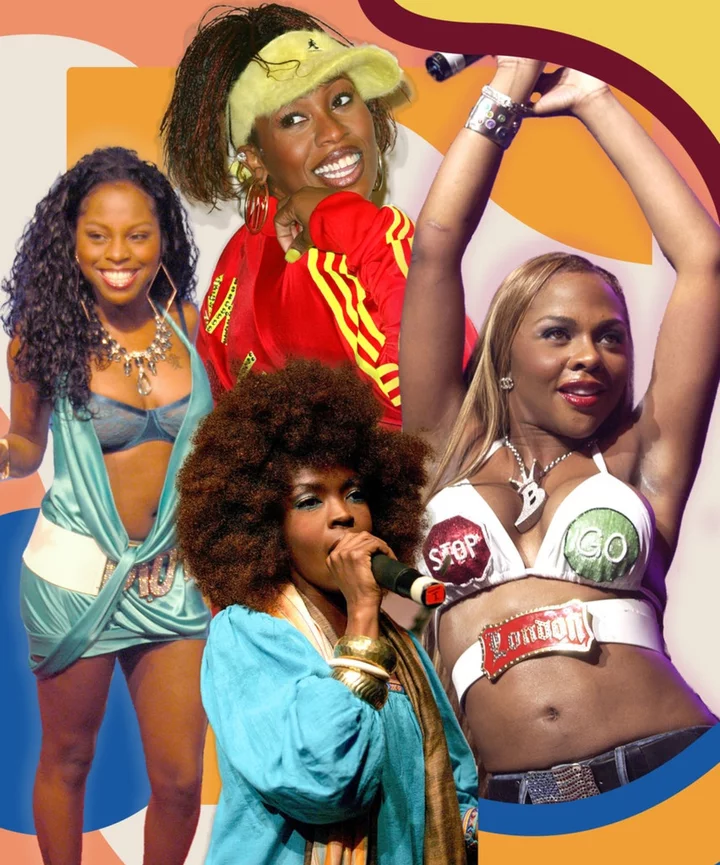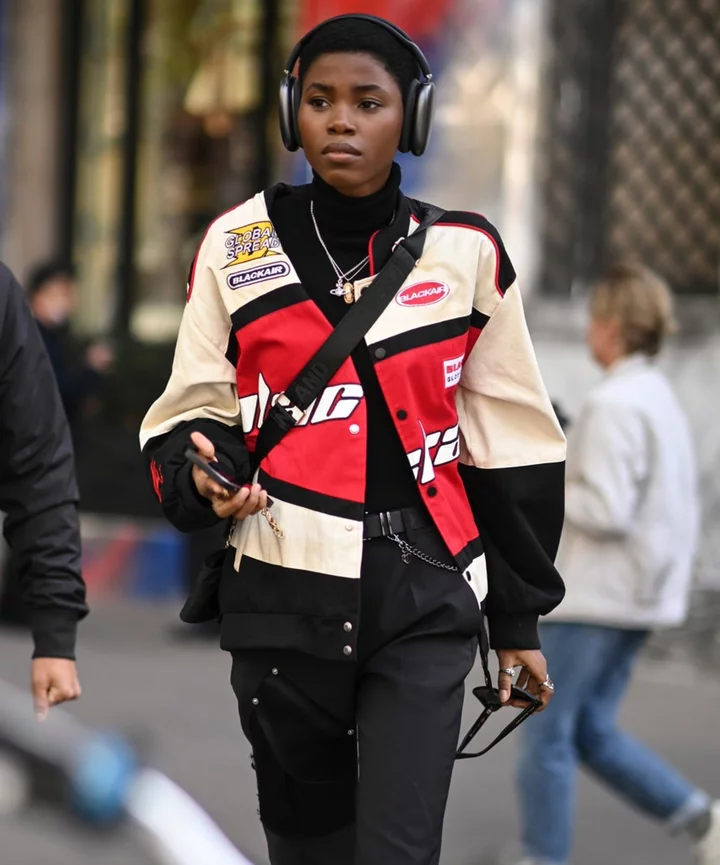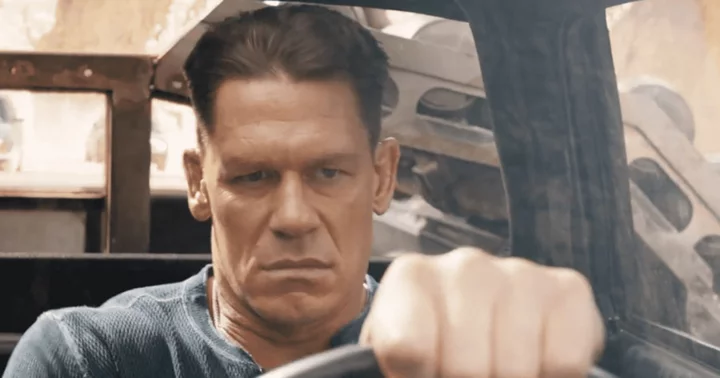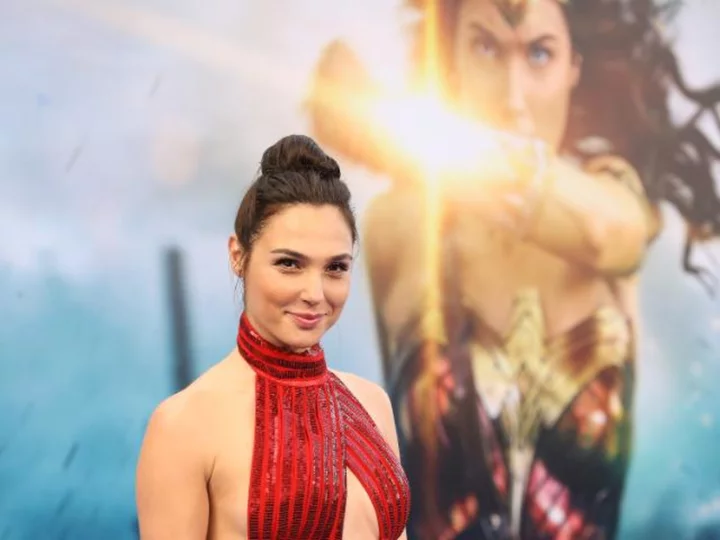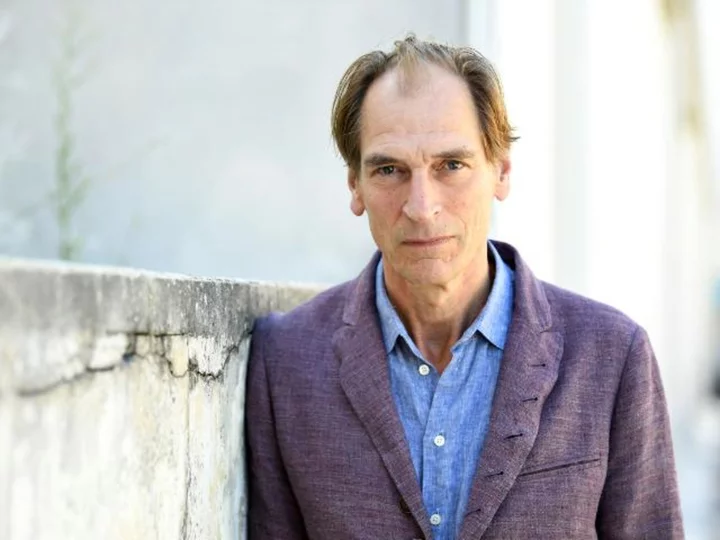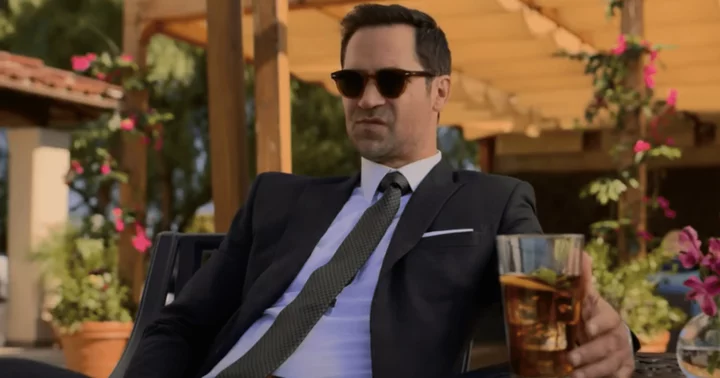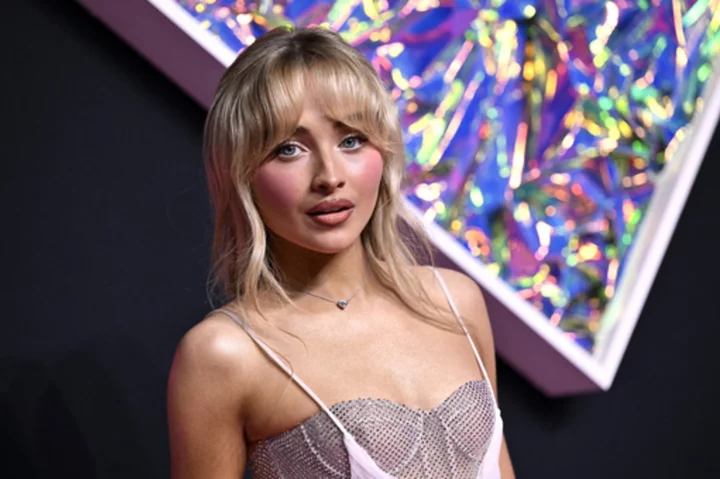In the classic 2002 rom-com Brown Sugar, the character Sidney Shaw (Sanaa Lathan), a music journalist and editor of XXL, asks all of her interview subjects one simple question: when did you fall in love with hip-hop? All year, we’ve been celebrating the 50th anniversary of the genre, and the Unbothered team has been asking ourselves the same question. We know how far hip-hop has come and how powerful the medium has been for all of us personally. But we also know that embedded in hip-hop’s roots along with b-boys from the Bronx, block parties, breakdancing, and mind-bending rhymes was misogyny, anti-feminist lyrics, and a culture that largely saw women as props instead of peers (despite women being a big part of rap’s foundation). You can simultaneously love hip-hop music and acknowledge the harm that some of its artists have perpetuated. There’s that famous Ava DuVernay quote that sums it up: “To be a woman who loves hip-hop at times is to be in love with your abuser.”
Aside from some of the more problematic aspects of hip-hop history, there’s also so much JOY. Holding two truths at the same time — no matter how nuanced or paradoxical — is what we do best here at Unbothered. So, while in a team meeting discussing how to honor 50 years of a genre that we love (but at times didn’t love us back), we decided to explore the moments when hip-hop made us feel seen. From the bold, colorful fashions that gave us permission to express ourselves loudly and proudly, to the women whose confidence helped us find our own, to lyrics that spoke to us when no one else was, hip-hop defined our childhoods. Here are the artists and moments that made us fall in love with hip-hop, and keep us loving it all these years later.
Thee Lyricists Who Set The Bar With BARS
“As a very sheltered child with a devout Christian mother, secular music was never allowed in my house. It wasn’t until junior high, when I finally had access to the internet, that I really got a chance to listen to hip-hop, and I desperately tried to catch up on what I had missed. This was around the time Nicki Minaj was blowing up, but it was The Miseducation of Lauryn Hill, which came out about a decade earlier, that really hit me hard. I can’t even count how many times I listened to that album. I was this young girl, clueless about life and in my first relationship, but her lyrics spoke to me in a way I couldn’t explain. I was obsessed and listened to that album everyday. Her music and lyrics inspired me to start writing, and that eventually led me to pursue creative writing in college. Lauryn’s words made me realize the power of storytelling, and I wanted to be a part of that magic.” – Alexis Jackson – Deputy Director, Social
“Nicki Minaj’s verse on ‘Monster’ was a defining moment in hip-hop lyricism for me. She’s on this iconic track with the heaviest hitters in all of hip-hop (old Kanye West, Rick Ross and Jay-Z) and out-raps all of them. The biggest thing that moment taught me is to be so good at what you do that nothing else — gender, seniority, popularity — matters.” – Kimber Bowman – Director, Multicultural Content Strategy
“The very first time I heard Megan Thee Stallion’s ‘Stalli Freestyle,’ I was mesmerized. Growing up in Houston, I knew about all the greats — Bun B, Z-Ro, Paul Wall, Slim Thug, Pimp C — but Megan was a revelation because was just like me. (Well, if I was tall and thicker than a bowl of cold oatmeal and good at rapping. She’s the stallion, I’m the pony. You get it.) As she switches effortlessly from a syrupy, sexy flow (‘Cognac Queen’ and ‘Big Ole Freak’) to powerful anthems for the moments when you need to remember that you’re that girl (‘Running Up Freestyle’), Meg proves to be a close study of the Houston sound, embodying the very essence of one of hip-hop’s most important influences even from her early underground days while simultaneously injecting the genre with her own addictive special sauce. She’s exactly what hip-hop, that music, that pop culture needs: a ‘round the way girl who does whatever she wants, never loses, and always looks good doing her thing. A real hot girl inspiration.” – Ineye Komonibo – Culture Critic
“The Miseducation of Lauryn Hill raised me. And I say that as no disrespect to my big brothers or my mom and dad who also did their part in shaping me into the person I am, but it was the bars on Miseducation that built me into writer, a creative, an intellectual, a lover, and a woman. I learned what love is — and isn’t — thanks to ‘Nothing Even Matters,’ ‘Ex Factor’ and ‘I Used To Love Him.’ I learned how to stand up for myself, my worth, and what success should look like thanks to ‘Lost Ones,’ ‘Superstar,’ and ‘Final Hour.’ I learned how to feel my feelings during heartbreak and pick myself back up again because of ‘When It Hurts So Bad.’ There are lyrics from this album that have acted like a guiding light throughout my adult life (‘everyday people, they lie to God too/ so what makes you think that they won’t lie to you?’) and ones that take me right back to when ‘I was just a little girl/ skinny legs, a press and curl.’ It’s hard to put into words what this album means to me because it gave me the words to find myself during my formative years. Without these songs, the soundtrack of my life would be incomplete. No matter how late she shows up, I will ride for Lauryn Hill till the day I die for the gift she gave me with these lyrics!” – Kathleen Newman-Bremang – Deputy Director, Global
It was the bars on Miseducation that built me into writer, a creative, an intellectual, a lover, and a woman… It’s hard to put into words what this album means to me because it gave me the words to find myself during my formative years.
kathleen newman-bremang on ‘the miseducation of lauryn hill’“‘The Seed 2.0’ by Cody Chesnut & The Roots. The song was released in March of 2003, but I didn’t hear it until the summer between my junior and senior year of college in 2010 when I lingered on campus for a few weeks after finals, and I begged my friend to send me playlist that I could listen to to take my mind off of the suffocating heat that comes with Philly summers. The playlist skewed Outkast but had some heavy hitters like UGK’s ‘Int’l Players Club’ and the majority of Mos Def’s Black on Both Sides. But the standout track was The Seed 2.0.’ It became the song of my summer. ‘I don’t beg // For no rich man // And I don’t scream, and kick, when his shit don’t fall in my hands, man //’Cause I know how to steal.’ I felt like this song validated who I was at 20 years old: a young Black woman who didn’t feel accepted in any facet of my life. A little too much or too little of everything. The song felt like a ‘fuck you’ to the establishment that tried to contain this new and every evolving genre of music. A blend of hip-hop, rock, and soul, the bending and rebending of what hip-hop could be was eye-opening.” – Rissa Papillion, Producer
Fresh To Death — Fashion Icons & Style Inspirations
“The fashion sense of female rappers has always been a powerful source of inspiration to me. I was the kid that watched MTV music videos as I got dressed in the morning and never missed 106 & Park because of artists like Missy Elliot. Her music videos always stood out to me because of how she embraced boldness and experimentation in her own unique way. Missy redefined what it means to be fashionable and unapologetically herself, and she’s truly my inspiration when it comes to streetwear style. Many don’t mention her in street style, but her videos and looks were being duplicated. The moment I saw her music video for ‘Gossip Folks,’ I wanted her Adidas tracksuit and hoped to be in one of her music videos as a kid dancer. (I can honestly say I wear my tracksuit multiple times within a month because it makes me feel comfortable, fly, and cool — just like Missy.) Her influence has encouraged a generation to step outside of their comfort zones, take risks, and embrace their own personal style with confidence and authenticity. When I saw her perform at Essence Fest this year, it took me back to my early childhood and how much I thoroughly enjoy her music. I chanted to every single song as if I wrote it alongside her.” – Venesa Coger – Style and Culture Editor
“If I had to name a singular woman in hip-hop that has most inspired my style over the years, it’d have to be Mariana ‘Ladybug Mecca’ Vieira (aka Khalilah-Azraa Vieira). The sole female rapper in Digable Planets — renowned hip-hop trio of the ‘90s known for their contributions to the subgenres of alternative hip-hop and jazz rap — Vieira dressed not unlike many other women in rap during the decade of their reign. From oversized plaid shirts to baggy pants, Vieira rocked it all, but it was her effortless cool and particular brand of tomboy femme that truly made it her own.
Growing up, I was never the stereotypical girly girl, often preferring jeans and sneakers over dresses and skirts. In my 20s, it’d be icons like Vieira (alongside Aaliyah, Janet Jackson, TLC, and other 90s starlets) that’d inspire most of my everyday looks as I flirted with the line between what’s considered ‘masculine’ and ‘feminine.’ Undeniably, Vieira’s entrance into the hip-hop scene was one of the first times I saw myself represented in the genre. In my 30s, I’m rocking more of an andro/boho/femme look depending on my mood, but when I’m looking for inspiration — whether it’s music or fashion — I still look to Vieira’s IG feed for ideas. Smooth, sexy, and timeless, Vieira will forever be a style icon in my eyes.” – Stephanie Long – Deputy Director, Enterprise
Missy Elliott redefined what it means to be fashionable and unapologetically herself. Her influence has encouraged a generation to step outside of their comfort zones, take risks, and embrace their own personal style with confidence and authenticity.
venesa coger on missy elliott“It was the tiddy shake heard ‘round the world. When Lil’ Kim, Mary J. Blige, and Diana Ross presented together at the 1999 MTV Video Music awards, the trio gave us one of the most iconic moments in hip-hop fashion history. Lil’ Kim was wearing the now famous sequined lilac jumpsuit, created by the one-and-only Misa Hylton (who used eyelash glue to secure the purple pastie to Kim’s tiddy) and in an impromptu move, Ross leaned over and gave Lil’ Kim’s breast a little jiggle, and it took the outfit from legendary enough to become a Halloween costume for decades to come to a cultural phenomenon. I wouldn’t say that I necessarily saw myself in this ‘fit (I was the girl who got in trouble at church for wearing too-tight skinny jeans), but this moment embedded itself into my brain as a definitive fashion memory. I remember thinking how AMAZING Lil’ Kim looked and how comfortable in her skin she seemed. It taught me that fashion can be freeing, and that wearing what makes you happy is always the move. Plus, I’ve had a crush on Kim ever since.” – Kathleen Newman-Bremang – Deputy Director, Global
“Teyonna Taylor was the first time I saw myself in the fashion universe of hip-hop. Until her, it felt like you had two sides of the coin — Missy Elliot (more masculine) or Lil’ Kim (more feminine). Then Teyonna burst out of the box on My Super Sweet Sixteen with hightops, bright colors, big hair, baggy jeans. It was the perfect mix of feminine and masculine, and even though her style has evolved a ton, she still stays true to that vibe.” – Kimber Bowman – Director, Multicultural Content Strategy
The Personalities Who Propped Us Up & Held Us Down
“Though TLC is technically an R&B group, seeing the late Lisa ‘Left Eye’ Lopes in the ‘Waterfalls’ music video was the first time I conceptualized as a first grader that girls could be rappers too. I remember thinking that Left Eye was by far the coolest member of the group, taking each song to another level with her lyricism. Growing up the middle child of three sisters close in age meant anytime we came across a famous female trio, we had to assign ourselves a member: The Powerpuff Girls (Buttercup), Destiny’s Child (we argued over who would be Beyoncé, but it was obviously me), the Kardashians (Kim, here), and of course, TLC, where I proudly attached my identity of Lisa “Left Eye” Lopes. The beautiful, cool as hell rapper with the ponytails and space buns struck me, at my young age, as someone who didn’t take shit from anyone. As a strong willed, unique, sometimes sharp-tongued, and definitely misunderstood child, I looked up to her. She was unapologetic and her presence was loud. She was just different, and it reaffirmed for me at a young age that it was okay for me to be different, too.” – Christa Eduafo – Social Content Strategist
The beautiful, cool as hell rapper with the ponytails and space buns struck me, at my young age, as someone who didn’t take shit from anyone. As a strong willed, unique, sometimes sharp-tongued, and definitely misunderstood child, I looked up to her.
christa eduafo on tlc’s lisa “left eye” lopes“When I first saw the ‘Big Bad Mama’ music video with Foxy Brown & Dru Hill, I fell in love with hip-hop. Foxy was a Caribbean girl from Brooklyn, just like me, and she was on the soundtrack for one of the most popular Black movies at the time, How To Be A Player. Not to mention Foxy reenacting a scene from Cinderella in the video. The fashion, lyrics, beat, and vibes were all on point.” – Sandy Pierre – Branded Execution Manager
“I don’t know if I knew how powerful confidence could be before Rah Digga. I remember watching her music video for ‘Imperial’ featuring Busta Rhymes, and the sheer swagger dripping off of her in that green fur coat and matching fedora was unmatched. I was mesmerized by the control she had over her flow and her command of the camera. The fact that she could hold her own beside Busta Rhymes wasn’t just impressive, it was inspiring. And, finally, because I’m Canadian, I have to shout out Michie Mee, the first Canadian MC to sign a record deal with a major American label and the Godmother of Canadian Rap. I remember when I discovered her, I went back and watched all her throwback interview clips on MuchMusic and CBC and her poise, confidence, and grace while dealing with misogynistic questions was incredible. As a Jamaican Canadian like me, she was infusing reggae and her Canadianess into her music, unapologetically. It gave me permission to embrace my own identity.” – Kathleen Newman-Bremang – Deputy Director, Global
“Cardi B came in with the ‘you can sit with us’ energy at a time in hip-hop culture when women in the rap industry weren’t championing each other the way they are today. She was on social media giving shoutouts and features to girls who were just breaking into the game and have blown up since. She showed us there’s room at the table for everyone, and that’s how I like to move too.” – Kimber Bowman – Director, Multicultural Content Strategy

